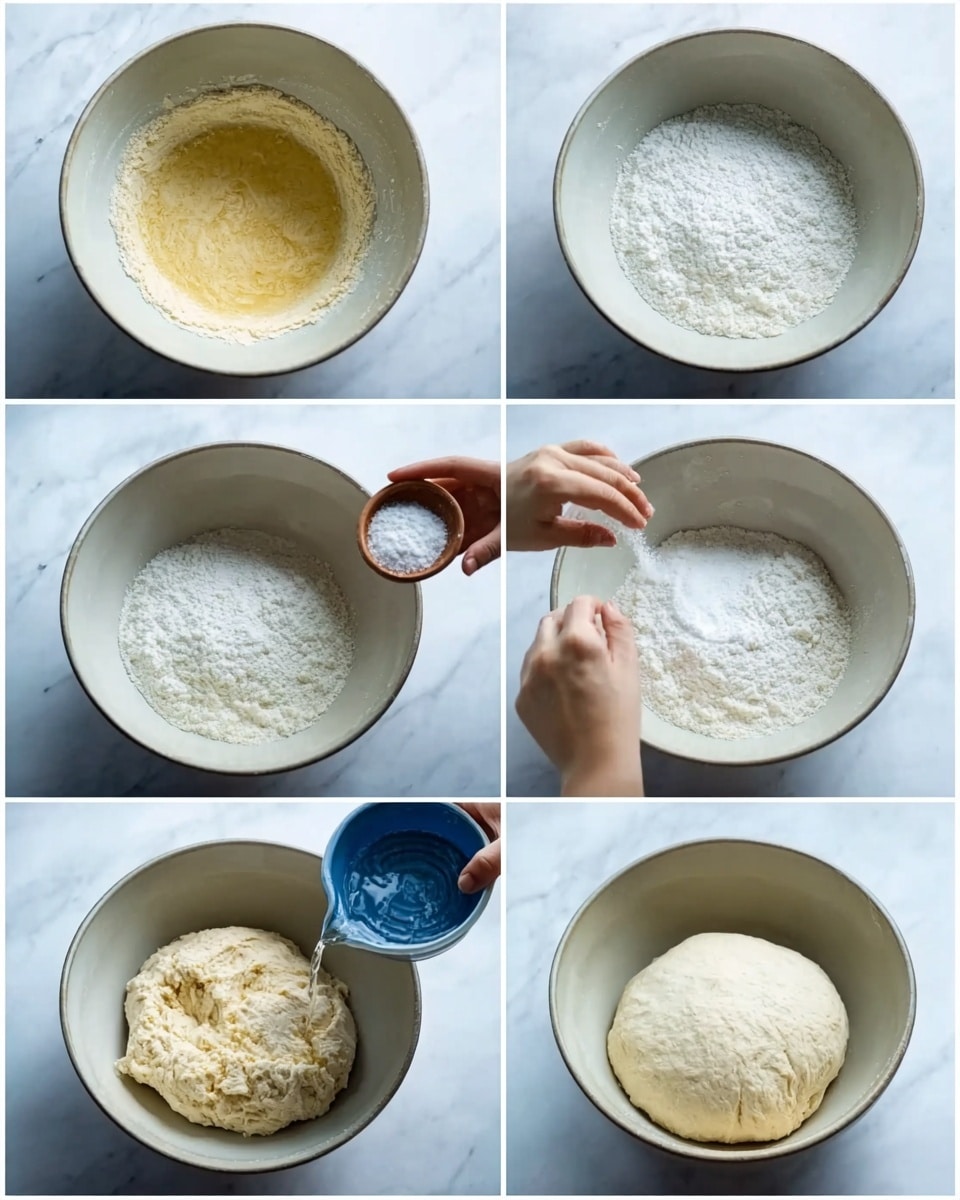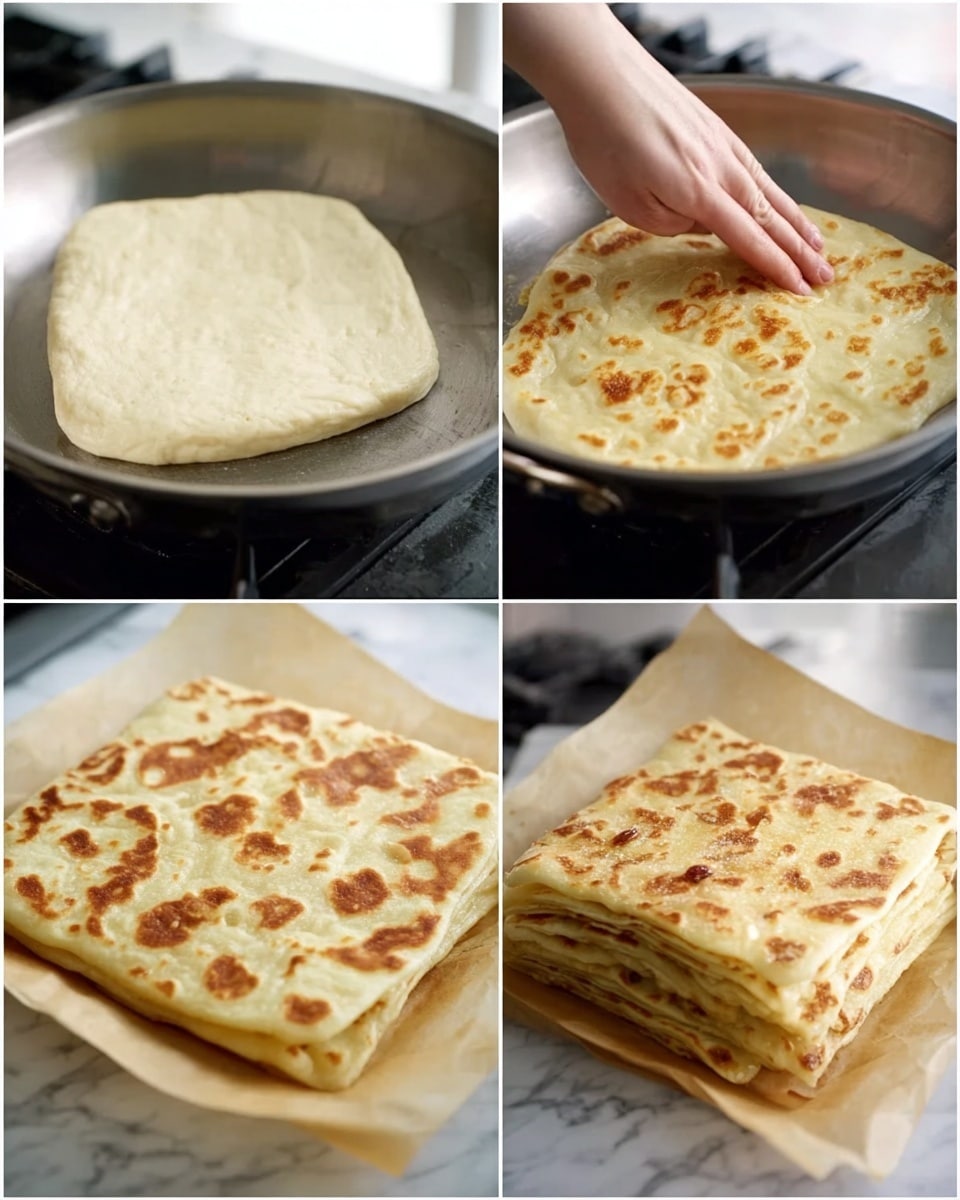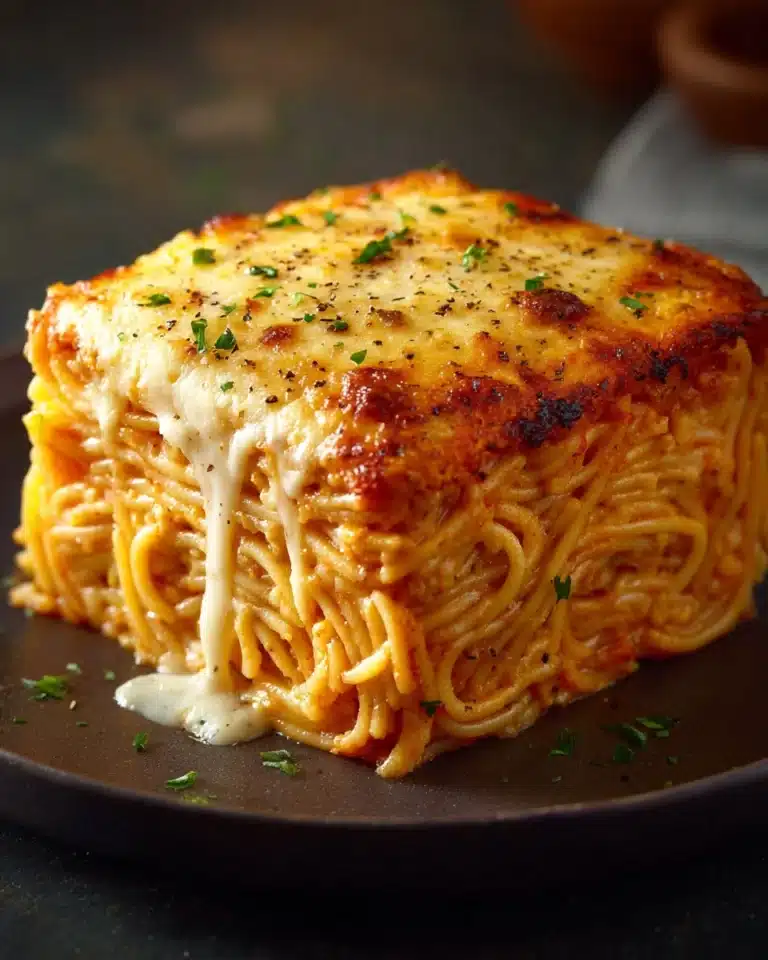If you’ve ever wanted to master a traditional Moroccan delight, then this Moroccan Msemen (Rghaif) Pancakes Recipe is your golden ticket. These flaky, tender squares bring together a crispy outside and a soft, layered inside that’s just begging for honey, cheese, or even a chocolate drizzle. Unlike your typical pancakes, msemen offers a truly unique flair that stands out with its rich history and flavor-packed texture. It’s a fantastic treat for breakfast, tea time, or any moment you want to impress your friends with something truly special from North Africa.
Ingredients You’ll Need

Don’t be fooled by the simplicity of these ingredients – each one plays a crucial role in creating the perfect Moroccan Msemen (Rghaif) Pancakes Recipe. From the fine semolina that adds a lovely bite, to the olive oil that brings everything together with moisture and flavor, these basics combine beautifully to give you that signature layered texture.
- Fine semolina: Provides a subtle crunch and structure to the dough
- Flour: Adds gluten for elasticity and chewiness
- Salt: Enhances all the flavors in the dough
- Water: Hydrates the dough, helping everything come together smoothly
- Olive oil: Keeps the dough moist and is essential for the flaky layers
You’ll find the full ingredient list, instructions, and print option in the recipe card below.
How to Make Moroccan Msemen (Rghaif) Pancakes Recipe
Step 1: Combine and Knead the Dough
Start by mixing the fine semolina, flour, and salt in a large bowl. Slowly add water and knead for a minute, then give it a short rest. After that, knead again for roughly five minutes until you have a smooth and elastic dough that’s soft but not sticky. This is where the magic begins, laying the foundation for those wonderful flaky layers.
Step 2: Rest and Shape the Dough
Roll out your dough into a long strip and cover it to relax for around five minutes. Then, divide the dough into six equal pieces and shape each into a ball. Resting allows the gluten to loosen, which makes the next steps easier and improves the texture of your msemen.
Step 3: Flatten and Rest Again
Generously grease your workspace and hands with olive oil, then gently flatten each ball into a square around 12 by 12 centimeters. Let these rest for about 10 minutes to soften further and become more pliable. This resting period is key to achieving the proper thinness when you start stretching out the dough.
Step 4: Stretch and Fold the Dough
This is the delicate part where your hands do most of the work. Coat your surface with olive oil and sprinkle fine semolina evenly to prevent sticking. Place one dough portion down and, using your fingertips, slowly stretch it from the center outwards into a large, thin circle about 50 centimeters across. Then, neatly fold the edges inward to form a neat 15 by 15 cm square. The layers you create here are what give msemen its incredible flaky texture.
Step 5: Cook the Pancakes
Heat a cast-iron pan or anaghdam over medium-high heat, lightly greased with oil. Sprinkle some semolina on both sides of your folded msemen before carefully flattening it slightly and cooking it on the hot pan. Flip it several times over the next few minutes, rotating and brushing with a little oil as you go to ensure even cooking and that amazing golden color. Take your time — patience here really pays off.
Step 6: Keep Warm and Ready
After cooking, brush your msemen with a touch of olive oil, stack them gently, then wrap in parchment paper followed by aluminum foil. This simple step traps steam and keeps your Moroccan Msemen (Rghaif) Pancakes Recipe warm and tender until you’re ready to serve.
How to Serve Moroccan Msemen (Rghaif) Pancakes Recipe

Garnishes
Msemen is wonderful on its own, but don’t hesitate to dress it up! A drizzle of honey or a sprinkle of powdered sugar adds a touch of sweetness that perfectly balances the savory layers. Alternatively, a dollop of fresh cheese or a smear of butter makes for a comforting bite that will keep everyone coming back for more.
Side Dishes
This recipe pairs beautifully with Moroccan mint tea, creating a cozy and authentic experience. You can also serve msemen alongside olives, jams, or fresh fruit for a bright contrast. These sides complement the richness of the pancakes and elevate breakfast or brunch to a celebration of flavors.
Creative Ways to Present
Try folding msemen over fillings like spiced ground meat, sautéed vegetables, or even chocolate spread for a fun twist. Serving them as small rolls or stacked with layers of your favorite dips can turn this simple dish into a flavorful feast at your next gathering.
Make Ahead and Storage
Storing Leftovers
If you have any leftover msemen, store them in an airtight container at room temperature for up to a day or in the refrigerator for 2-3 days. This helps preserve their delicate texture without drying out, so you can enjoy them fresh the next day.
Freezing
Msemen freezes wonderfully for longer storage. Place individual pancakes on a baking sheet so they don’t stick, freeze until solid, then transfer to a freezer bag. They’ll keep well for up to a month, making them perfect for a quick snack anytime.
Reheating
When it’s time to eat your stored msemen, reheat gently in a pan over low heat or in a toaster oven until warm and slightly crisp. Avoid microwaving as it can make the layers soggy. Reheating slowly preserves the delightful crisp-flaky texture that makes these pancakes so special.
FAQs
What makes Moroccan msemen different from regular pancakes?
Unlike fluffy, single-layer pancakes, msemen is a layered and flaky dough cooked until crispy on the outside while staying tender inside. It’s often folded into squares and has a slightly chewy texture that’s unique and satisfying.
Can I use regular flour instead of semolina?
You can, but the texture will change. Semolina adds a subtle graininess and firmness that regular flour lacks. For the best authenticity and texture, stick with fine semolina combined with flour as the recipe calls for.
Is olive oil the only fat I can use?
Olive oil is traditional because it imparts a lovely flavor, but you can substitute with melted butter or vegetable oil if needed. Keep in mind that changing the fat might alter the final taste and texture slightly.
How thin should I stretch the dough?
Stretch it as thin as possible without tearing—aiming for a circle about 50 centimeters across. The thinner the dough, the more delicate and flaky your msemen will be, so don’t be afraid to go thin!
What fillings are popular for msemen?
Traditional fillings include honey, butter, cheese, or spiced ground meat. Recently, chocolate and other sweet spreads have also become favorites. Feel free to get creative and use whatever suits your taste!
Final Thoughts
Diving into this Moroccan Msemen (Rghaif) Pancakes Recipe is like welcoming a piece of Morocco into your kitchen with every flaky bite. It’s a recipe that rewards patience and love, resulting in a snack or meal that’s incredibly versatile and utterly delicious. Whether you serve it plain or filled with all your favorite toppings, msemen is sure to become a beloved staple in your cooking repertoire. Give it a try—you won’t regret this journey into North African flavors!
PrintMoroccan Msemen (Rghaif) Pancakes Recipe
Msmen, also known as Rghaif, is a traditional Moroccan flatbread that resembles a pancake but offers a unique flaky, layered texture. Made from a simple dough of semolina, flour, salt, water, and olive oil, these savory or sweet flatbreads are cooked on a hot cast-iron griddle to achieve a golden, crispy exterior and tender inside. Perfect for filling with honey, cheese, chocolate, or any preferred filling, Msmen showcases the rich culinary heritage of Morocco and North Africa.
- Prep Time: 20 minutes
- Cook Time: 15 minutes
- Total Time: 35 minutes
- Yield: 6 msemen (serves 6)
- Category: Bread
- Method: Stovetop
- Cuisine: Moroccan/North African
- Diet: Vegetarian
Ingredients
Dough
- 400 g fine semolina
- 400 g flour
- 10 g salt
- 500 ml water
- 125 ml olive oil (divided: 25 ml, 15–20 ml, and remaining for brushing)
- 4 g fine semolina (for sprinkling)
Instructions
- Prepare the Dough: In a deep bowl, combine the semolina, flour, salt, and water. Knead the mixture for one minute until initially combined, then let it rest for 3 minutes. Knead again for about 5 minutes until the dough becomes smooth and elastic.
- Roll Out Dough Strip: Transfer the dough onto a clean work surface and roll it out into a long strip approximately 30 cm (12 inches) in length. Cover with plastic wrap and let rest for about 5 minutes to relax the gluten.
- Divide and Shape Dough Balls: Cut the dough strip into 6 equal pieces, each weighing approximately 215 grams. Shape each piece into a smooth round ball.
- Initial Flattening and Resting: Grease your work surface with 25 ml of olive oil. Place the dough balls on the oiled surface, grease your hands thoroughly with olive oil, and gently press each ball into a flat square approximately 12 by 12 cm. Let rest for 10 minutes to allow the dough to relax.
- Stretch Dough Thin: Generously coat the work surface with 15-20 ml olive oil and sprinkle 4 g fine semolina evenly. Place a flattened dough piece on the surface and, using your greased fingertips, gently and quickly stretch the dough outward from the center to form an ultra-thin circle about 50 cm in diameter. Re-grease hands as needed for easier handling.
- Fold into Squares: Fold the thin circular dough inward to create a square shape measuring approximately 15 by 15 cm. Repeat this process for all six portions.
- Heat Cooking Surface: Preheat a greased cast-iron pan (anaghdam) over medium-high heat until it is hot and ready for cooking.
- Prepare Msemen for Cooking: Sprinkle fine semolina on both sides of each folded dough square. Begin with one msemen on a greased work surface, greasing your hands again to gently flatten its edges with fingertips until the square doubles in size to approximately 23 by 23 cm. Work with one msemen at a time; start preparing the next only when the current one is nearly finished cooking.
- Cook Msemen: Place the prepared msemen onto the hot cast-iron pan. Cook for about 30 seconds on one side, then flip. Continue cooking for 1 to 1.5 minutes, rotating the msemen and your hands in a circular motion to ensure even cooking. Flip once more and cook for an additional minute, then repeat flipping and rotating a final time to achieve a uniformly golden and crispy texture.
- Brush with Oil and Stack: Once cooked, brush the msemen on both sides lightly with olive oil and stack them to keep warm and soft.
- Wrap for Warmth: Wrap the stacked msemen in parchment paper first, then tightly in aluminum foil. This method traps steam, preserving the softness and warmth of the flatbreads until serving.
Notes
- Msemen is best served warm and can be enjoyed plain or filled with sweet or savory fillings such as honey, cheese, or chocolate.
- Practice improves technique—handling and stretching the dough thinly requires patience and repetition.
- Using a cast-iron pan helps develop the signature crispy, golden crust.
- Greasing hands and the work surface with olive oil throughout the process prevents sticking and aids in dough stretching.
- Work on one msemen at a time during cooking for optimal texture and timing.
- Wrapping stacked msemen in parchment and foil is essential to maintain their softness before serving.








